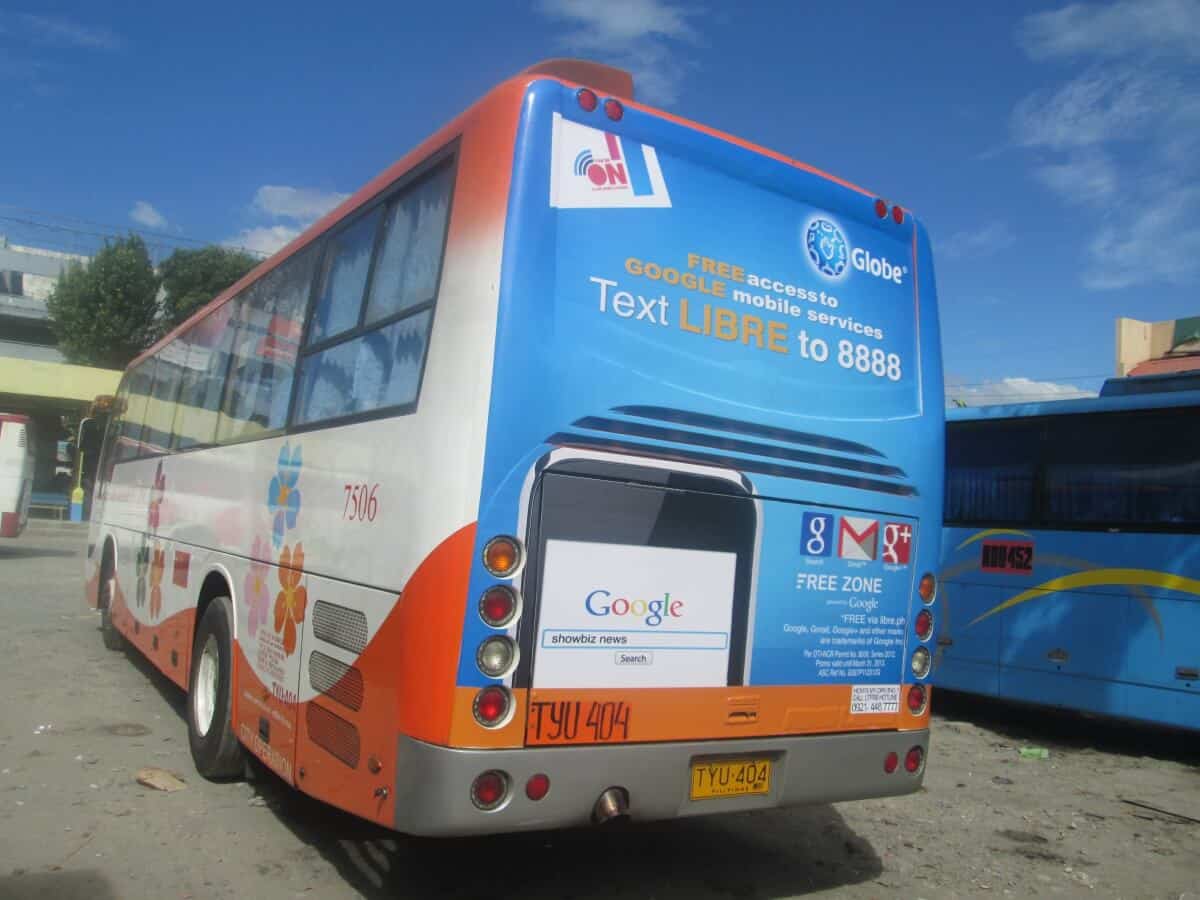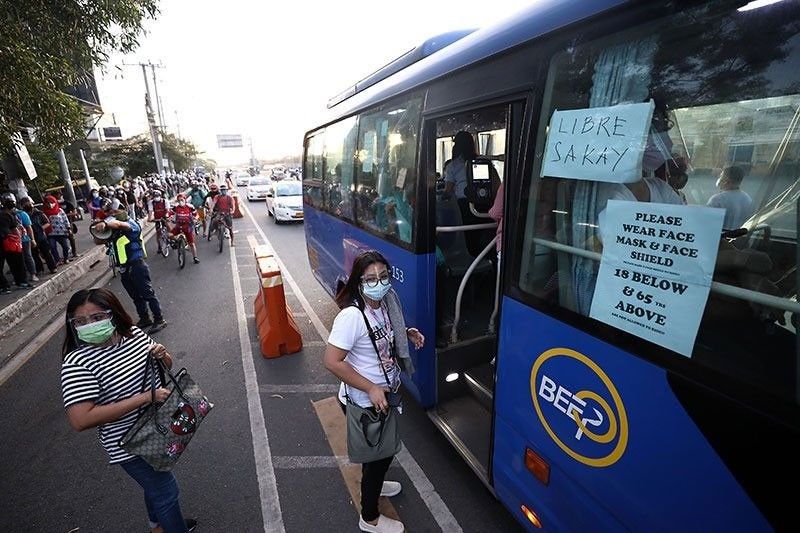Take Full Advantage Of Direct Exposure with Transit Advertising Philippines
Take Full Advantage Of Direct Exposure with Transit Advertising Philippines
Blog Article
Just How Transportation Advertising And Marketing Can Transform Public Transport Spaces Into Dynamic Advertising Operatings Systems
Transportation marketing holds considerable possibility to redefine public transport rooms right into vibrant advertising and marketing systems that notify and engage. By making use of cutting-edge layouts such as electronic screens and interactive booths, brands can not only get to a diverse audience but likewise enhance the overall traveler experience. This strategy produces an unique opportunity for brand names to get in touch with customers in a setup that is typically neglected. As we explore the complex advantages and advancing techniques of transportation advertising and marketing, it raises the inquiry of just how this transformation might redefine our interactions with both brand names and the city atmosphere.
Benefits of Transportation Advertising And Marketing

In addition, transit marketing is highly cost-efficient contrasted to typical media. It permits advertisers to achieve high impressions at reduced costs, maximizing return on financial investment. The restricted audience of commuters supplies a possibility for brands to convey their messages to people that are usually receptive throughout their travel times.
Additionally, the dynamic nature of transportation advertising and marketing permits projects to be upgraded frequently, making sure that messaging continues to be appropriate and prompt. This adaptability can be critical in reacting to market patterns or marketing occasions, keeping the brand top-of-mind for consumers. Last but not least, the prevalent existence of transit advertising and marketing adds to brand name recall; duplicated direct exposure within acquainted traveling contexts reinforces brand recognition and promotes customer commitment, ultimately driving sales and improving brand name online reputation.
Kinds Of Transportation Marketing
Mass transit systems give numerous layouts for advertising and marketing, each catering to different marketing methods and audience interaction methods. One prominent kind is external bus and train covers, which cover the whole lorry and develop a mobile signboard effect, allowing for high exposure in metropolitan settings. These wraps can capture focus as they go across busy streets, getting to a varied target market.
Another prominent layout is indoor advertising and marketing, which consists of posters, electronic displays, and advertisements on transit seats. These positionings involve passengers throughout their trip, reinforcing brand messaging in a constrained area. Digital shows, particularly, offer the advantage of vibrant content, enabling marketers to update messages in real-time.
Station advertising and marketing is also significant, including posters, banners, and interactive booths within transit stations. These advertisements utilize foot website traffic and can target particular demographics based upon place.
Lastly, promotional collaborations with transit authorities can lead to unique campaigns, such as themed transportation experiences or events, improving the total involvement with travelers. Each kind of transit advertising uses unique advantages, enabling brand names to customize their strategy to properly reach their target audience within the public transportation ecosystem.
Involving Travelers Successfully
Travelers are progressively inundated with marketing messages throughout their everyday travels, making it crucial for brands to involve them in ingenious ways. To record interest in this crowded area, marketers need to focus on imagination and significance. Using distinctive visuals and succinct messaging can considerably improve the likelihood of interaction.
Interactive components, such as QR codes or enhanced truth features, can additionally change fixed advertisements right into immersive experiences, fostering a deeper connection with the target market. Brand names need to concentrate on addressing travelers' interests and requirements, tailoring messages to resonate with their lifestyle, whether via promos for regional businesses or solutions created to boost their travelling experience.
Additionally, timing plays an important duty; strategically placing ads during optimal travelling hours can maximize visibility and effect. Involving travelers properly likewise involves leveraging social networks assimilation, allowing passengers to share their experiences or promos straight from transportation platforms, consequently intensifying brand reach.
In significance, efficient interaction pivots on understanding the commuter journey and developing compelling, interactive, and relevant advertising experiences that not only record attention yet likewise drive action and commitment. By doing so, brand names can change mass transit right into a dynamic marketing platform that resonates with its audience.

Measuring Advertising Effect
How can brands properly analyze the efficiency of their marketing projects in transportation settings? Measuring the impact of transit advertising and marketing needs a complex technique that integrates measurable and qualitative metrics. One widespread approach is tracking involvement through mobile analytics, where brand names can evaluate foot web traffic patterns and app communications in the past, during, and after projects.
Surveys can supply useful understandings into brand name recall and customer belief, allowing brands to determine how well their messages resonate with travelers. Furthermore, keeping an eye on social media sites involvement pertaining to particular projects can expose changes in public understanding and brand discussion.

Furthermore, teaming up with transit companies can improve dimension accuracy, as they often possess in-depth market data on ridership fads. By incorporating these techniques, brand names can develop an extensive understanding of their advertising and marketing performance, making sure that their projects not only get to but also Bonuses influence their target market effectively.
Future Patterns en route Advertising
A significant change is expected en route advertising and marketing as technological advancements and changing consumer behaviors improve the landscape. Transit Advertising Philippines. The integration of electronic displays and interactive media is anticipated to enhance engagement, permitting brand names to provide vibrant web content that reverberates with diverse target markets. As public transport systems embrace clever innovation, advertisers will certainly leverage real-time information analytics to customize messages based upon traveler demographics and habits
Moreover, boosted fact (AR) is positioned to revolutionize the way travelers interact with promotions. By providing immersive experiences, AR can change an ordinary trip into an appealing story that captures focus and fosters brand commitment. This advancement will likely urge advertisers to produce even more experiential campaigns that drive consumer communication.
Sustainability is one more crucial pattern influencing transportation advertising. As ecological awareness grows, brand names will progressively seek to line up with green methods, using lasting materials and promoting green initiatives within their projects.
Final Thought
To conclude, transportation advertising uses significant advantages by enhancing brand exposure and engaging a restricted target market. Through various formats, such as exterior covers and electronic screens, it transforms public transport into a vibrant marketing system. Efficient involvement approaches and robust measurement techniques even more intensify its effect. As patterns develop, the potential for ingenious interactions in between commuters and brands is positioned to expand, ensuring that transportation advertising and marketing remains an essential component of modern marketing approaches.
Transit marketing holds substantial capacity to redefine public transportation areas into vivid marketing systems that notify and involve. The pervasive existence of transit advertising and marketing contributes to brand name recall; repeated exposure within acquainted traveling helpful resources contexts strengthens brand recognition and cultivates consumer loyalty, inevitably driving sales and boosting brand online reputation.
Exactly how can brand names accurately evaluate the performance of their advertising and marketing projects in transportation atmospheres?In verdict, transportation marketing provides significant benefits by enhancing brand name visibility and engaging a captive target market. see Transit Advertising Philippines. As fads advance, the possibility for cutting-edge interactions in between travelers and brands is positioned to expand, guaranteeing that transportation marketing continues to be a vital element of modern-day advertising and marketing methods
Report this page